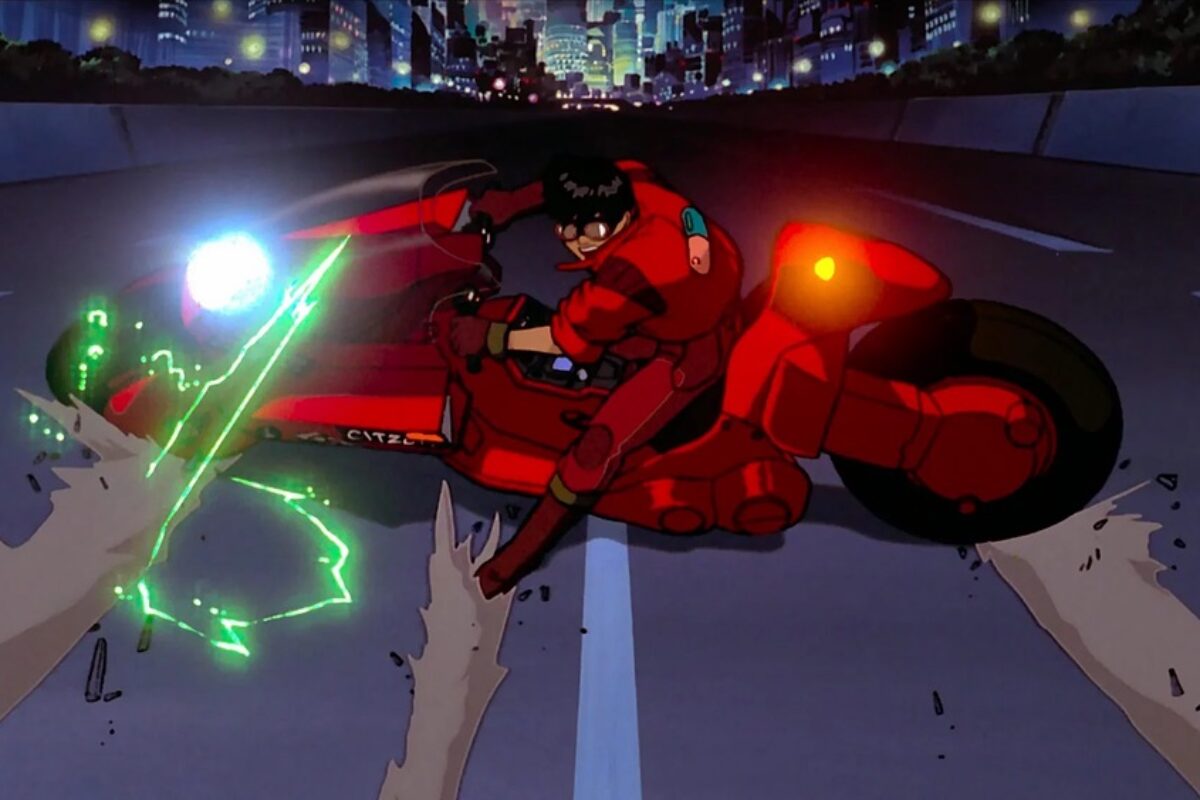Background
Akira, an icon of Japanese culture and a masterfully produced film. It embodies a bizarre mix of science fiction and horror, taking place in a post-apocalyptic Japan. Directed by Katsuhiro Ôtomo, Akira was originally released in Japan during the summer of 1988, gaining popularity almost instantly. With a budget of around $9 million, it is one of the most expensive anime productions ever, grossing roughly $49 million in box office sales alone. Akira also made significant technological and cultural leaps, becoming the first of its kind in more area than one. The film was very forward-thinking, and stands as a marvel of animation to this day.
Akira surrounds three strange children who are in custody of the government, and seem to possess some strange telekinetic powers. At first it is unclear where these powers came from or what the childrens’ intentions are. However, a brief shot of a crater suggests that they must have some connection to the atomic blast. The story follows Shatoro Kaneda, the leader of an outlaw bike gang, and his friends. Following a strange sequence of events, one of his friends, Tetsuo, crashes his motorcycle into one of these children. The child is unharmed, but Tetsuo is hospitalized, and begins having strange visions. It soon becomes clear that he has gained these same telekinetic powers, but is incapable of controlling them, which becomes a main point of conflict.
Plot
The film takes place in Neo-Tokyo in the year 2019, thirty one years after World War III, and an atomic blast that leveled the city. In this post-apocalyptic world, crime runs rampant, anti-government sentiments are strong, and a mysterious energy known as Akira rises. The film’s main conflict is portrayed as good vs. evil through the constructive and destructive powers of atomic energy. Kaneda and his friends are portrayed as anti-heroes, opposed by the seemingly tyrannical government attempting to control this powerful force. As the plot thickens, however, the situation becomes much more complicated. We begin to see these two sides share some common goals.
The three children seem to represent good through self-control, the constructive qualities of energy, and the effectiveness of teamwork. They attempt to correct the mistakes caused by humans, and to make the world a better place. Tetsuo, however, a tormented and conflicted man, represents evil through his inability to control his own energy. He is seen causing mass destruction, acting on impulses and emotion, going after the people who were once his friends. These negative qualities, although first manifesting as power, ultimately consume him.
Here, he proclaims “I am Tetsuo”; signifying the death of his physical body and transcendence from human existence. This engulfs Neo-Tokyo, destroying everything, but also creating something new. Akira is portrayed as life and death, creation and destruction, and good and evil, all in one. This represents both the duality of atomic energy, the rebirth of Japan after WWII, and aims to explain the nature of good vs. evil. Such themes help make Akira one of the most influential films of all time, referred to as “the film that changed everything” by Cinefantastique in 2004.
Production
Akira stands as a marvel of modern animation, and with such a large budget, was able to include effects that put it ahead of its time. Utilizing a massive palette of 327 colors, the film’s illustrations stand out on the screen like stars in the sky. 50 of these colors, in fact, were created solely for the film; giving it an extremely unique and ethereal atmosphere. It was one of the first animated films to utilize CGI, helping to show movement much more clearly. The film was the first of its kind to depict Tokyo in full detail, made possible by its budget and employment of talent through The Akira Committee.
This committee was comprised of several major Japanese entertainment companies. They worked tirelessly to create an animated film of epic proportions, and I would say those standards were far exceeded. Akira was way ahead of its time, especially when it hit the U.S. market, and stands as a marvel of animation to this day. At the time, such uncensored violence and language was relatively unheard of in animated films, adding to Akira’s revolutionary status.
Conclusion
Ultimately, through its focus on atomic energy, spirituality, and even anti-war sentiments, Akira is one of the most profound films of all time. The film relies on historical contexts and cultural values, making it more than just some cartoon. It provides valuable lessons on human nature and offers philosophical insights on life in general. For these reasons, and many more, Akira stands as a marvel of animation and film culture to this day.
If you read this far, and are interested in checking out the film, it is currently available for streaming on Hulu in both the original and dubbed versions. Thanks for reading!












